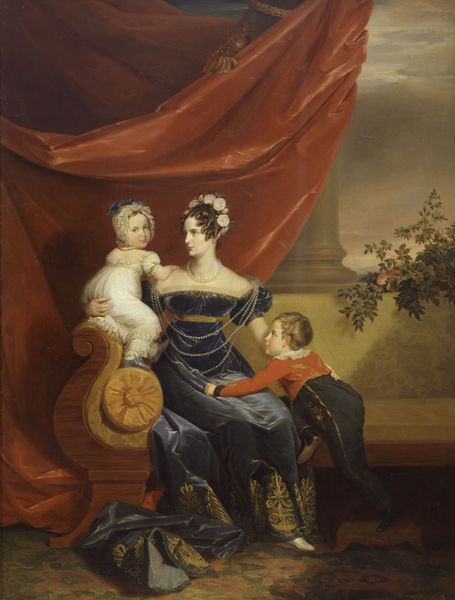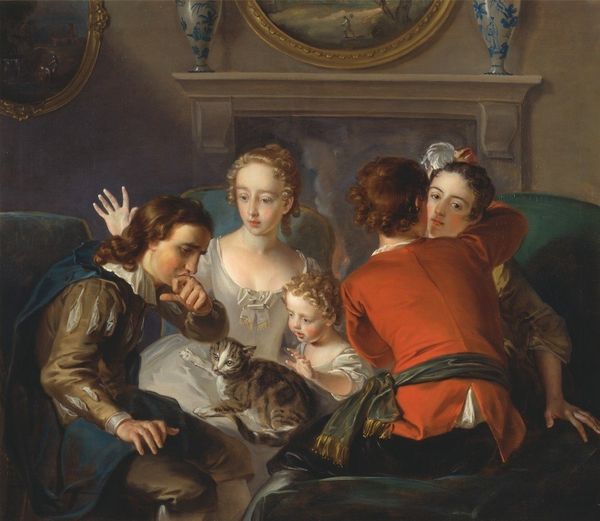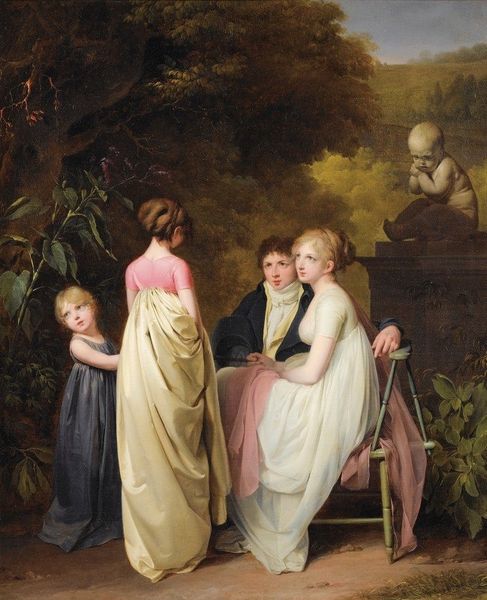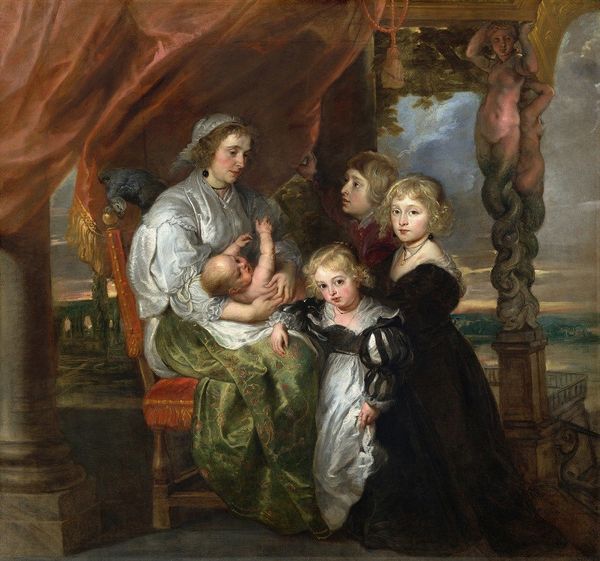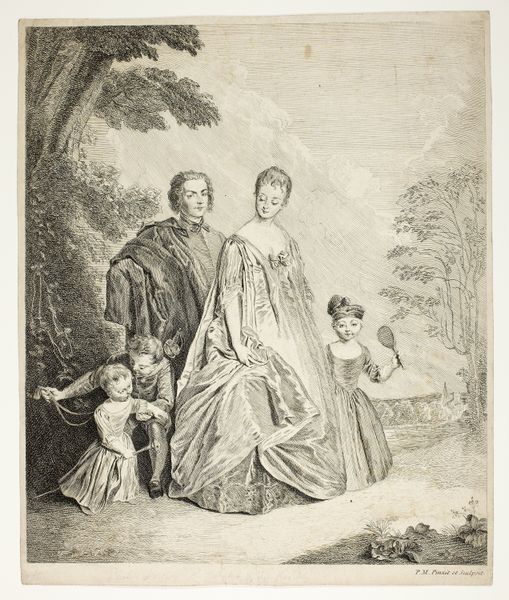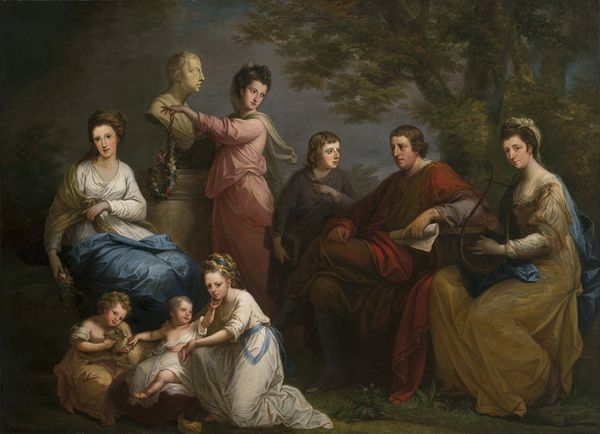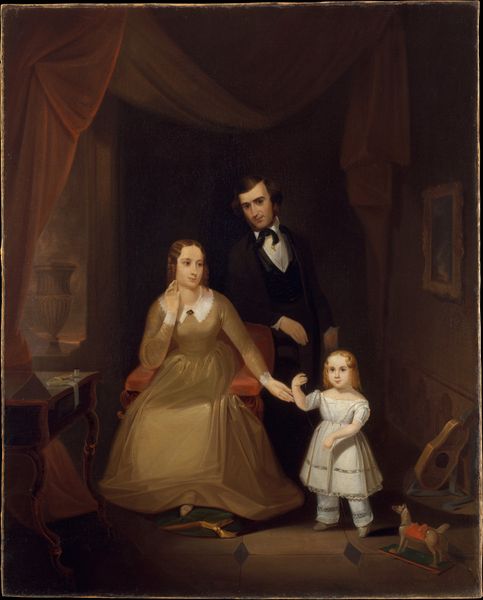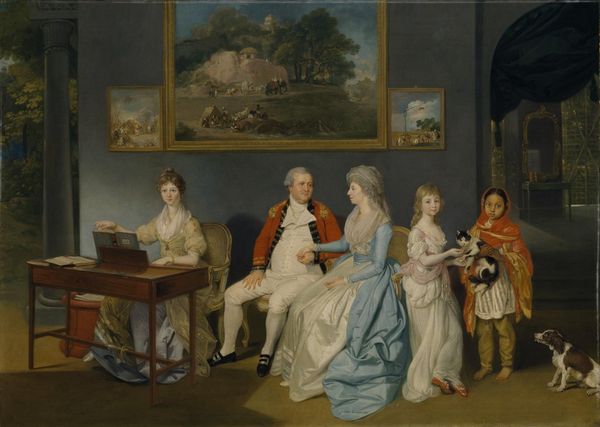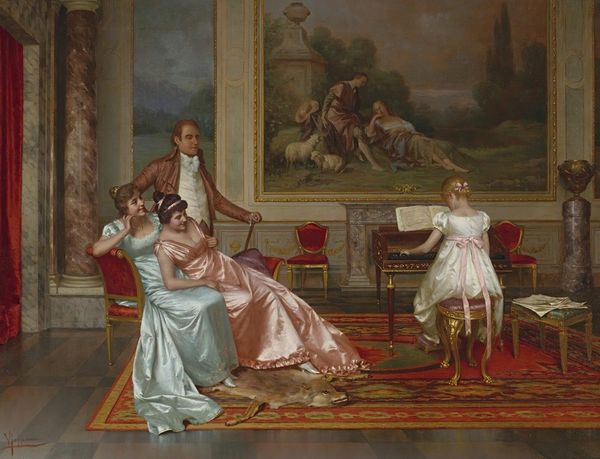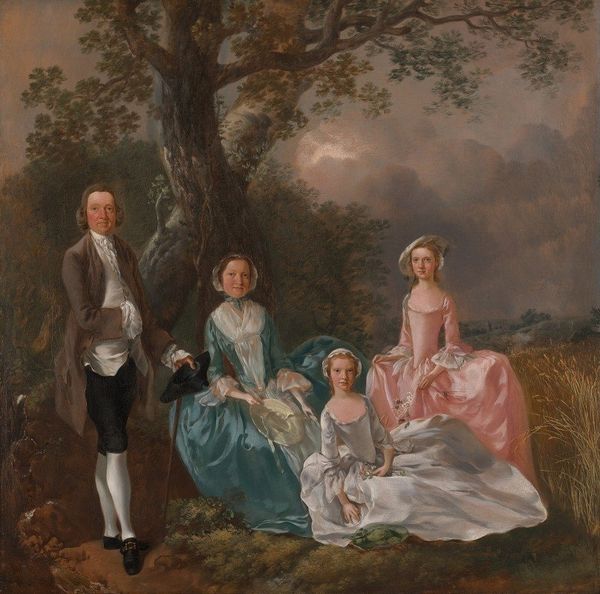
oil-paint
#
portrait
#
mother
#
oil-paint
#
oil painting
#
neo expressionist
#
child
#
romanticism
#
history-painting
#
academic-art
#
portrait art
Dimensions: 125 x 108 cm
Copyright: Public domain
Curator: Francesco Hayez painted "Family Portrait of the Stampa di Soncino" in 1823. Look at the composition: it is structured yet quite moving, don’t you think? Editor: I do. There's a sense of… controlled melancholy, isn't there? They're positioned with purpose, almost staged in this contrived landscape. Curator: Indeed. Hayez skillfully uses the surrounding nature as a backdrop. Notice the way he’s built the painting through lines and careful arrangements. The figures create a complex geometric structure—consider, especially, the relationship of their gazes. Editor: The backdrop strikes me as oddly passive for a Romantic painting, especially considering Hayez was engaging in political allegory at the time. Do you see a hint of commentary about the restraints placed on Italian families by societal and political powers of the era? Curator: Potentially. Yet, consider the almost academic quality of the details— the fabrics, the delicate skin tones. He paints light so beautifully across the woman's dress and the child's skin. Editor: Yes, there is also the inescapable power dynamics within the domestic sphere to think about when observing this family group. The maternal figure and child seem centered, visually, though the gaze shifts about the composition. It does not settle. It makes one wonder about Hayez’s relationship to women as subjects. Curator: Perhaps. However, look again at the figures positioned along diagonals to achieve balance and the limited color palette contributing to the visual unity of the painting. Its formal structure speaks volumes about his mastery. Editor: Structure always implies social power. This image becomes so fascinating when we consider the roles and expectations that bound individuals in this particular time and space in Italy. Hayez invites us to reflect on these unspoken stories. Curator: Absolutely, and that's where the painting succeeds—Hayez’s technical skill evokes endless readings, informed equally by visual cues and historical perspectives. Editor: I agree; Hayez provokes with what the painting is—and what it represses.
Comments
No comments
Be the first to comment and join the conversation on the ultimate creative platform.
